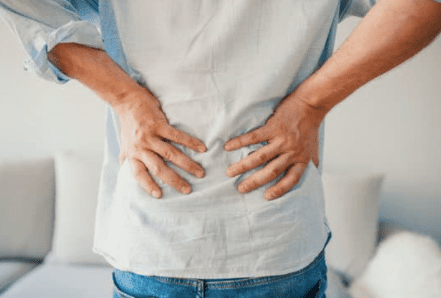
Acute back pain? We can help!
Acute back pain? We can help! https://www.cliftonhillphysiotherapy.com.au/wp-content/uploads/2022/03/Acute-Back-Pain.png 441 298 zibmedia zibmedia https://secure.gravatar.com/avatar/cf977b81b2074b6ee657b8ea1ab40386?s=96&d=mm&r=g- zibmedia
- no comments
Acute back pain can start with something as minor as putting on your socks or getting out of bed! With any back pain, there are a few important things to remember:
- Back pain is really common and shouldn’t be something to be afraid of. Almost 4/10 adults are estimated to have had some back pain over a twelve month period (Hartvigsen, 2018).
- Most back pain settles significantly within 6 weeks (Hartvigsen, 2018) often sooner.
- Exercise (when coupled with advice) is effective at managing acute back pain (Foster, 2018)
With this in mind, here are 5 practical tips to help you out when your back does get sore:
1) Keep moving- this is the best thing that you can do for your back pain. It might mean a little bit of walking, some lying on your back/side, some sitting or some standing. Mix things up. This allows your joints and muscles to stay mobile and stops your muscles losing strength.
2) Pain medication won’t ‘fix the problem’ but it may help you keep moving and might help you to sleep better. Anti-inflammatory medications are typically more effective than paracetamol (panadol) in acute back pain. Talk to your doctor or pharmacist to see if these are right for you.
3) Getting out of bed can often be painful with a sore back. Try rolling onto your side and using your legs as a counterweight pushing up with your arms.
4) Experiment with painful positions to see if you can make them more comfortable. A rolled up towel behind your back when sitting, sitting further forward/back in a chair, bending your knees when lying on your back/your side or rolling your hips forward/back when standing might all be helpful.
5) Heat (either with a heat pack or a hot shower) can often be useful to help reduce the protective spasm of muscles in the back. Try applying heat for 20 minutes, every few hours across the day to see if it might be helpful for you. If it is, keep it up!
Come in and see one of our physios and we can help to get moving and free from pain.
Matt Blanckensee (link to Matts bio) , Physiotherapist
References:
Foster, N. E., Anema, J. R., Cherkin, D., Chou, R., Cohen, S. P., Gross, D. P., . . . Woolf, A. (2018). Prevention and treatment of low back pain: Evidence, challenges, and promising directions. The Lancet, 391(10137), 2368-2383. doi:http://dx.doi.org/10.1016/S0140-6736(18)30489-6
Hartvigsen, J., Hancock, M. J., Kongsted, A., Louw, Q., Ferreira, M. L., Genevay, S., . . . Woolf, A. (2018). What low back pain is and why we need to pay attention. The Lancet, 391(10137), 2356-2367. doi:http://dx.doi.org/10.1016/S0140-6736(18)30480-X
- Posted In:
- Design

